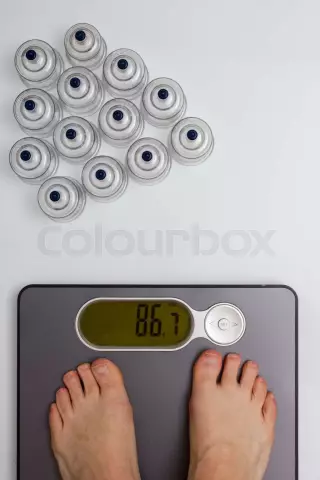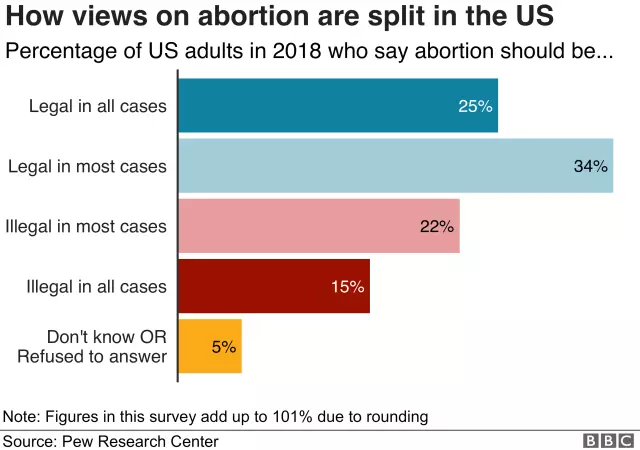- Author Rachel Wainwright [email protected].
- Public 2023-12-15 07:39.
- Last modified 2025-11-02 20:14.
Vacuum abortion
Vacuum abortion is the most gentle of all surgical methods for abortion.

The procedure is usually prescribed by a gynecologist from the antenatal clinic. Indications for a vacuum abortion are:
- Unsuccessful medical abortion;
- Malformations in the development of the fetus;
- Chronic illness of the mother, incompatible with bearing a child;
- Actually, a woman's personal desire to terminate a pregnancy.
Advantages and Disadvantages of Vacuum Abortion
A vacuum abortion is performed in the first trimester (from 6 to 12 weeks of pregnancy). According to reviews, a vacuum abortion has the fewer complications the earlier it is done.
The vacuum abortion procedure lasts no longer than 5-10 minutes, after which the woman is still in the hospital for some time so that the doctors can clearly see her positive state of health. After that, the woman is allowed to go home. After vacuum abortion, the area of damage in the uterus is only 20 cubic centimeters, which is characterized by minor trauma to the uterine mucosa, in contrast to conventional curettage.
However, according to reviews, vacuum abortion has a significant drawback - there is no full guarantee of getting rid of unwanted pregnancy. According to statistics, the ovum remains in place in about 2% of cases.
Contraindications to vacuum abortion
Vacuum abortion has a number of contraindications, which include:
- The presence of an acute infectious disease in a woman, since there is a likelihood of transferring the infection into the uterine cavity, which is fraught with serious complications in the future;
- Ectopic pregnancy is also a contraindication for vacuum abortion. With this pathology, the ovum is outside the uterus, therefore, the termination of pregnancy by the vacuum method can pose a threat to the patient's life;
- Doctors do not recommend having a vacuum abortion earlier than a year and a half after delivery;
- Poor blood clotting.
Soreness of a vacuum abortion
This question is natural for all women who decide to terminate a pregnancy in this way.
The operation is performed under local anesthesia, so the procedure itself does not cause painful sensations. True, during the opening of the cervix, a woman may feel some discomfort.
But after a vacuum abortion, a woman may be disturbed by pulling pains in the lower abdomen, since, whatever you say, a vacuum abortion is also a surgical procedure. However, severe pain should not be normal.
How is a vacuum abortion performed?
The main instrument for the procedure is an electric vacuum pump, which helps to extract the contents from the uterus. With this instrument, negative pressure is created in the uterus, which leads to the fact that the ovum is detached from the uterine wall and is sucked out.
With vacuum abortion, the vessels of the uterus are not injured, and the absence of various metal dilators allows you to leave the cervix intact. Therefore, the risk of infertility in the future from such an abortion is minimal.
The procedure for performing a vacuum abortion itself can be divided into three stages:
- Preparatory;
- The operation itself;
- After vacuum abortion.
At the preparatory stage, a woman consults a gynecologist, the gestational age is determined, the following tests are prescribed:
- General analyzes of urine and blood;
- A smear on the vaginal microflora;
- Analysis for the determination of the hCG hormone;
- Ultrasonography;
- Blood clotting test;
- Analysis to identify diseases of the genital area;
- Analysis for hepatitis and HIV, RW.
After carrying out all the preparatory measures, the abortion begins directly with a vacuum. It is carried out in a specialized medical institution, and a few hours later the woman is released home.
During the procedure itself, the woman sits in a gynecological chair, her legs are fixed as during a normal examination. The inner walls of the vagina and the entrance must be treated with an antiseptic.
If a woman has not yet given birth, then she will need to expand the cervix using a special metal dilator that is inserted into the vagina. This is not required for women who have given birth.
After that, a local anesthetic is injected into the cervix, then a rigid tube is inserted into the uterus, and then, when using an electric suction, the required pressure is created inside (0.5 atmospheres).
Then, using a solid tube, the doctor sucks the ovum, which is pulled through the tube into a special container. As the tissue is removed from the uterus, many women experience contractions during a vacuum abortion. The spasms only stop after the tube is removed from the vagina. Some patients also experience weakness, nausea, or sweating during a vacuum abortion.
The operation takes an average of five minutes. After a vacuum abortion, the woman needs a little rest within the hospital.
Letting the woman go home, the doctor prescribes her a course of antibiotics to avoid infection, as well as taking painkillers if the woman is bothered by severe cramping pains.

Two weeks after a vacuum abortion, a woman should come for examination to a gynecologist, undergo tests and do an ultrasound scan.
Sexual life after vacuum abortion
Until the uterus is completely healed (within 2-3 weeks) after a vacuum abortion, you cannot have sex. For the first month and a half after termination of pregnancy, it is necessary to use condoms to protect against new unwanted pregnancies and infections.
If a woman after an abortion does a pregnancy test, and it shows a positive result, this means that the abortion was unsuccessful, therefore, the pregnancy was preserved or turned out to be ectopic.
That is why it is imperative to see a doctor two weeks after the abortion.
Found a mistake in the text? Select it and press Ctrl + Enter.






